Understanding the Basics of Patent 101 Rejections
Patent 101 rejections pertain to refusals made by patent examiners under Section 101 of the Patent Act. This section determines what constitutes patentable subject matter. Generally, for an invention to qualify for a patent, it must fall within the categories of a “process,” “machine,” “manufacture,” or “composition of matter.” However, certain types of inventions are explicitly excluded from patent eligibility, leading to numerous rejections under this provision.
The complexity of patent law can make it challenging for inventors to understand why their applications are rejected. Familiarizing oneself with the basics of these rejections is crucial for navigating the patent application process effectively. Understanding the nuances of what constitutes patentable subject matter can save inventors time and resources, allowing them to refine their inventions or pivot their strategies before resubmitting their applications.
The Legal Framework for Patent 101
The cornerstone of Patent 101 is found in Title 35 of the United States Code. This legal framework stipulates the types of inventions that qualify for patent protection and outlines the criteria that must be met. Key elements include:
- Eligible Subject Matter: Inventions must be of a specific type, including a process, machine, or manufacturer.
- Utility Requirement: The invention must have a useful purpose.
- Novelty: The invention must be new and not merely a combination of existing ideas.
Understanding this legal framework is vital for applicants looking to strengthen their patent applications. Each element plays a role in whether an invention is deemed patentable under the law. For instance, the utility requirement not only necessitates that the invention serves a practical purpose but also that it is operable and not merely theoretical. This means that inventors should be prepared to demonstrate the functionality of their inventions, potentially through prototypes or detailed descriptions of how the invention works in practice.
Common Reasons for Patent 101 Rejections
Patent 101 rejections can arise from various factors, leading to significant setbacks for applicants. Some common reasons include:
- Abstract Ideas: Inventions that are seen as abstract concepts rather than concrete applications are often rejected.
- Naturally Occurring Phenomena: Discoveries of natural laws or phenomena cannot be patented.
- Insufficient Practical Utility: If the invention lacks a specific utility, it may not qualify for patent protection.
By understanding these reasons, inventors can take proactive measures to design their inventions in a way that meets patent eligibility criteria. For example, addressing the issue of abstract ideas often involves providing a clear and detailed explanation of how the invention applies in a real-world scenario, demonstrating its practical applications and benefits.
Additionally, inventors should consider conducting thorough prior art searches to ensure their inventions do not overlap with existing patents, thereby enhancing their chances of approval.
The Impact of Patent 101 Rejections
The implications of Patent 101 rejections can be far-reaching, affecting not only individual inventors but also larger businesses and innovation ecosystems. Navigating these rejections is vital for maintaining a competitive edge in various industries.
Consequences for Inventors and Businesses
For inventors, the rejection of a patent application can be disheartening. It may lead to several consequences:
- Financial Loss: The costs associated with filing and responding to patent rejections can accumulate quickly.
- Intellectual Property Risks: Without patent protection, inventors may risk their inventions being copied by competitors.
- Lost Opportunities: A lack of patents can hinder an inventor’s ability to attract investors or license their technology.
Businesses, on the other hand, may find their innovation strategies hindered by frequent patent 101 rejections. Companies often invest significant resources into research and development, only to face barriers in acquiring patent rights. This situation can lead to strategic reassessments concerning product launches and market entry. Furthermore, the inability to secure patents can result in a loss of market share to competitors who successfully navigate the patent landscape, creating a ripple effect that can stifle growth and reduce overall industry competitiveness.
The Role of Patent 101 Rejections in Innovation
While Patent 101 rejections may seem like an obstacle, they can also promote innovation. The stringent criteria help ensure that only truly novel and nonobvious inventions receive patent protection. This can drive inventors to refine their ideas and pursue more meaningful innovations. In many cases, the process of addressing the reasons for rejection can lead to a deeper understanding of the technology and its potential applications, ultimately resulting in more robust and valuable inventions.
Moreover, the rejections can encourage collaboration, as inventors may need to work with legal experts and other professionals to adjust their applications, fostering a more interdisciplinary approach to invention and problem-solving. This collaborative spirit can lead to unexpected partnerships and synergies, where inventors from different fields come together to create innovative solutions that may not have been possible in isolation. The challenges presented by Patent 101 rejections can thus catalyze creativity and teamwork, pushing the boundaries of what is achievable in various sectors.
Navigating Through Patent 101 Rejections
Successfully navigating Patent 101 rejections requires a strategic approach. By understanding the nature of these rejections, inventors can adopt practices that enhance the likelihood of their applications being approved.
Preemptive Measures to Avoid Rejections
Before submitting a patent application, inventors can take several preemptive measures to mitigate the risk of rejection:
- Conduct Thorough Research: Understanding existing patents and literature can provide insights into what qualifies as patentable.
- Clarify the Invention’s Utility: Clearly outline how the invention is useful in the application to meet utility requirements.
- Consult Legal Experts: Engaging with patent attorneys can help navigate the complex legal requirements of patent law.
By adopting these measures, inventors can enhance their applications and reduce the likelihood of rejections based on Patent 101 criteria. Additionally, it is beneficial for inventors to stay updated on recent changes in patent law and guidelines issued by the United States Patent and Trademark Office (USPTO). This knowledge can provide a competitive edge, allowing inventors to tailor their applications to meet evolving standards. Furthermore, participating in workshops or seminars focused on patent law can also equip inventors with practical insights and strategies from experienced professionals in the field.
Responding to a Patent 101 Rejection
Should a patent application receive a Patent 101 rejection, it is essential to respond effectively. The following steps can guide inventors through this process:
- Understand the Rejection: Carefully read the examiner’s reasoning to fully comprehend the basis for the rejection.
- Amend Claims: Consider revising the claims in the application to better align with patent eligibility criteria.
- Provide Evidence: Include any supporting documentation or evidence that demonstrates the invention’s utility or uniqueness.
Timely and well-prepared responses can often make a significant difference in overcoming a Patent 101 rejection. In addition to the outlined steps, inventors should consider the importance of crafting a compelling narrative around their invention. This narrative should not only highlight the technical aspects but also emphasize the broader impact and potential applications of the invention. Engaging in discussions with potential users or industry experts can provide valuable perspectives that can be incorporated into the response, showcasing the invention’s relevance and necessity in the market.
Moreover, it may be advantageous to seek feedback from peers or mentors who have successfully navigated similar challenges, as their experiences can offer practical advice and bolster the investor’s confidence in the response process.
The Future of Patent 101 Rejections
The landscape of patent law is continuously evolving. As technology advances, so too does the interpretation of what constitutes patentable subject matter. Understanding potential changes is crucial for inventors and businesses alike in preparing for future applications.
Potential Changes in Patent Law
There are ongoing discussions concerning potential changes in Patent 101 legislation. Some anticipated modifications include:
- Broader Definitions of Patentable Subject Matter: Legislative efforts may aim to clarify what types of inventions qualify for patent protection.
- Adaptation to Emerging Technologies: New regulations may be introduced to address challenges posed by rapidly evolving technologies, such as artificial intelligence and biotechnology.
These potential changes indicate a shifting perspective on innovation and what is considered patentable, which could significantly impact patent filings. For instance, the rise of artificial intelligence has prompted debates on whether AI-generated inventions should be eligible for patent protection. This question raises fundamental issues about authorship and the nature of invention itself, as traditional patent law has been built around the concept of a human inventor.
As a result, the legal framework may need to adapt to accommodate these new realities, ensuring that the patent system remains relevant and effective in promoting innovation.
Predicted Trends in Patent 101 Rejections
Looking forward, we can expect some trends regarding Patent 101 rejections:
- Increased Scrutiny: Executives and attorneys may face heightened challenges in navigating complex patent eligibility criteria.
- More Consultations with Legal Experts: As the landscape changes, inventors are likely to seek guidance to ensure their applications align with current standards.
- Focus on Innovation in Established Fields: Rejections may drive inventors to explore traditional industries for novel applications.
These trends will shape how patent applications are developed, reviewed, and ultimately approved in the coming years. Moreover, as patent offices around the world begin to harmonize their approaches to patentability, inventors may find themselves needing to adapt their strategies to comply with varying international standards. This could lead to an increase in collaborative efforts among inventors and legal professionals to create comprehensive applications that not only meet local regulations but also anticipate potential rejections based on global trends. The interplay between innovation and legal frameworks will undoubtedly create a dynamic environment, challenging inventors to think creatively while navigating the complexities of patent law.
Conclusion
Analyzing Patent 101 rejections provides valuable insights into the patent application process. By understanding the legal framework and common reasons for rejection, both inventors and businesses can navigate these challenges more effectively. Through proactive measures and informed responses, the journey toward securing patent protection can become less daunting. As patent law continues to evolve, staying adaptable will be crucial for those seeking to innovate within the patent system.
Computer Packages Inc. (CPI) is a privately owned IP management company with over fifty years of experience serving the IP community. Our mission is to be the most trusted partner in safeguarding clients’ IP assets with innovative IP management software and annuity services. Learn how we specialize in IP patent, trademark, and annuity management by exploring our services.


